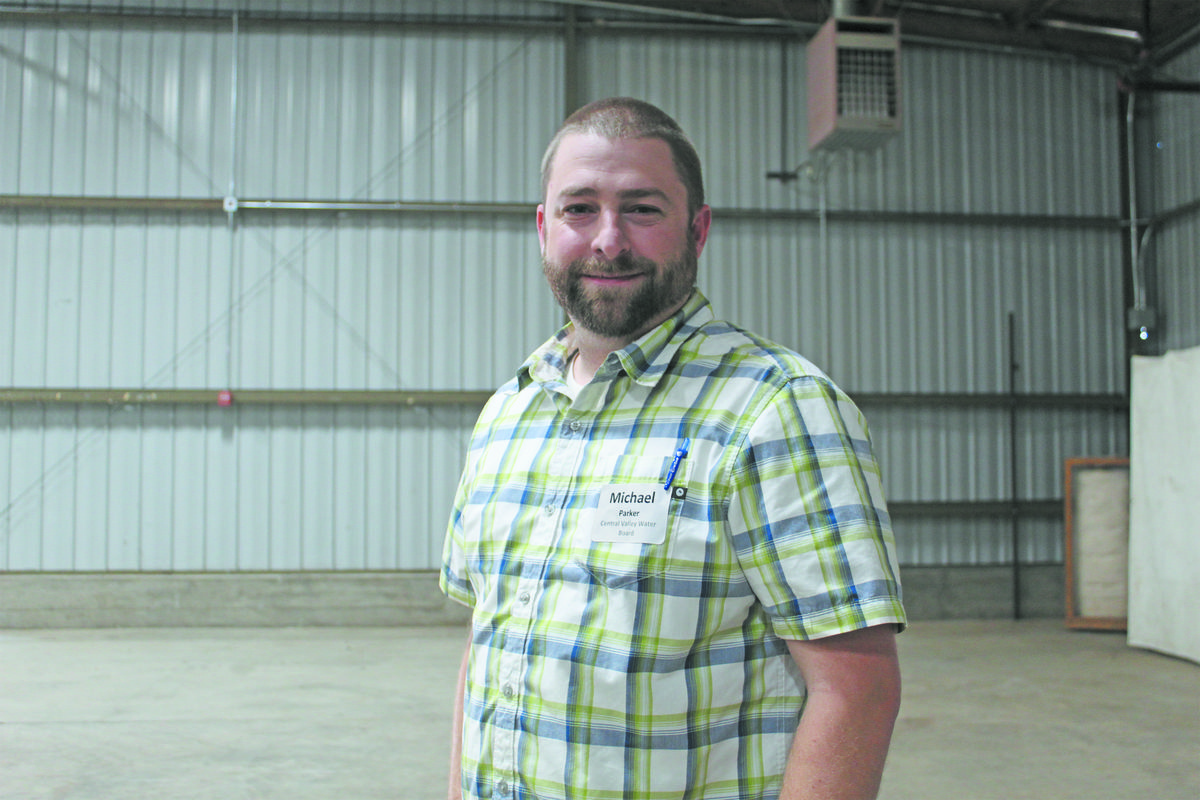
Photo by Meredith J. Cooper
Michael Parker
Everyone has heard it a million times by now: The Camp Fire was the most destructive fire in California’s history. But that’s only taking into consideration man-made structures. What about the natural landscape—and, in particular, our waterways?
To echo the mantra of 2017’s Standing Rock protest, “Water is life.” That was what brought many people out to Chico State’s University Farm Tuesday (June 4) for the daylong Camp Fire Water Resources Monitoring and Research Symposium. Organized by the University of California Cooperative Extension, it included presentations from researchers who have been studying fire’s impact on ecosystems, in particular ground and surface water.
The underlying message of the day, based on the preliminary results of water testing and visual monitoring following the Carr and Camp fires, shared by multiple agencies: There is still a whole lot to learn.
“The level of interest was impressive—people are really looking at this with fresh eyes,” attendee Dan Efseaff, Paradise’s Recreation & Park District manager, told the CN&R after the symposium.
Topics ranged from the initial rapid response to the blaze to lessons learned from the Carr Fire to storms’ impacts on fire-stricken landscapes. Test results were shared, fieldwork compared.
The strategic placement of waddles in anticipation of winter storms to keep ash and debris from flowing directly into the waterways yielded positive results, several speakers said. That effort was spearheaded by Carol Wallen, senior biologist for NorthStar Engineering, and Butte County’s Public Works Department. That firm and the county mobilized crews from the California Conservation Corps prior to the first storm in December following the Camp Fire.
“Our priority was Paradise,” she said, explaining that the town’s urban features, plus the fire’s intensity, created a huge number of challenges from a watershed standpoint. They focused first on the four waterways that run through town, looking at what kinds of businesses or homes were nearby—“Was there a photo lab here, or were they developing X-rays?” RV parks presented unique challenges because of their concrete pads—versus lawns and landscaping—and “awesome storm drain systems.”
Chico’s Deer Creek Resources created a gridded map of the town that Wallen’s team used to direct the placement of waddles—which ranged from basic erosion-control devices to those that absorbed metals and other contaminants. In 16 days, she said, they laid out 110,000 feet of waddles.
“What Carol’s team was able to do was huge,” said Michael Parker, an engineering geologist for the Central Valley Regional Water Quality Control Board who set out after the storm to test for contamination in local waterways. Like Wallen, his crew spanned various agencies, including the Department of Water Resources (DWR) and Caltrans. They agreed upon 10 testing sites, including a control site above the burn scar in Helltown and spanning down into the valley, and at Lime Saddle Marina.
Early testing revealed very little contamination, which showed that the erosion-control measures were working. As the winter storms progressed and the cleanup effort began, those test results showed growing amounts of contaminants, including heavy metals and chemicals, eventually prompting public health notices regarding creek water and shallow wells.
Given the Camp Fire’s proximity to and location upstream from Lake Oroville, a considerable amount of attention has been paid to groundwater and drinking water supplies.
From a groundwater perspective, Evan MacKinnon, an environmental scientist for DWR, said he and his team initially set out to determine any potential sources of groundwater contamination. They found plenty, mostly in the form of damaged well heads and septic systems. They prioritized sites alongside watersheds—there are over 2,000 burned structures along Butte Creek, for example.
“This was an urban fire,” Efseaff commented after the forum. “We have to characterize it that way—and look at man-made contaminants versus your normal redistribution of nutrients that happens after a normal forest fire. [Tuesday’s talk] made me think we should probably give those streams more room [away from structures], to keep contaminants out and keep them functioning well.”
Lake Oroville, part of the State Water Project, was a hot topic as well, and while some test results revealed contamination likely due to debris from the fire, they weren’t at levels that DWR determined to be harmful to human health. At the same time, Daniel Wisheropp, an environmental scientist with DWR, said, “We need to do more work to determine what can be attributed to the fire, versus what’s [naturally] in the lake.”
Paradise Irrigation District Manager Kevin Phillips explained his agency’s response Tuesday, which he characterized as ever-changing. The town still has a do-not-drink order in place and solving the problem of contaminated pipelines will take years. Twelve percent of PID’s main lines are contaminated, Phillips reported, and test results have been completely random—positive for benzene and other elements at one address and clear next door.
“We’re on the precipice of finding a game plan to clear this,” he said, but PID has a gross deficit due to losing 90 percent of its paying customer base. He’s hoping to get funding to replace most—if not all—the contaminated plastic piping throughout the water system. He’s also hoping to release guidelines on how to test plumbing inside standing structures within the next week or so.
“We’re really in uncharted territory,” Efseaff summed up. “We’re going to learn a lot during this experience for the future.”
